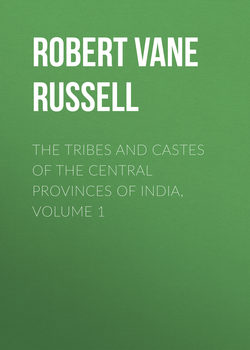Читать книгу The Tribes and Castes of the Central Provinces of India, Volume 1 - Robert Vane Russell - Страница 21
Part I.
Introductory Essay on Caste
Introductory Essay on Caste
18. Social gradation of castes
ОглавлениеAn examination of the social status of the castes of the Central Provinces, which, as already seen, are representative of a great part of India, shows that they fall into five principal groups. The highest consists of those castes who now claim to be directly descended from the Brāhmans, Kshatriyas or Vaishyas, the three higher of the four classical castes. The second comprises what are generally known as pure or good castes. The principal mark of their caste status is that a Brāhman will take water to drink from them, and perform ceremonies in their houses. They may be classified in three divisions: the higher agricultural castes, higher artisan castes, and serving castes from whom a Brāhman will take water. The third group contains those castes from whose hands a Brāhman will not take water; but their touch does not convey impurity and they are permitted to enter Hindu temples. They consist mainly of certain cultivating castes of low status, some of them recently derived from the indigenous tribes, other functional castes formed from the forest tribes, and a number of professional and menial castes, whose occupations are mainly pursued in villages, so that they formerly obtained their subsistence from grain-payments or annual allowances of grain from the cultivators at seedtime and harvest. The group includes also some castes of village priests and mendicant religious orders, who beg from the cultivators. In the fourth group are placed the non-Aryan or indigenous tribes. Most of these cannot properly be said to form part of the Hindu social system at all, but for practical purposes they are admitted and are considered to rank below all castes except those who cannot be touched. The lowest group consists of the impure castes whose touch is considered to defile the higher castes. Within each group there are minor differences of status some of which will be noticed, but the broad divisions may be considered as representing approximately the facts. The rule about Brāhmans taking water from the good agricultural and artisan castes obtains, for instance, only in northern India. Marātha Brāhmans will not take water from any but other Brāhmans, and in Chhattīsgarh Brāhmans and other high castes will take water only from the hands of a Rāwat (grazier), and from no other caste. But nevertheless the Kunbis, the great cultivating caste of the Marātha country, though Brāhmans do not take water from them, are on the same level as the Kurmis, the cultivating caste of Hindustān, and in tracts where they meet Kunbis and Kurmis are often considered to be the same caste. The evidence of the statements made as to the origin of different castes in the following account will be found in the articles on them in the body of the work.
